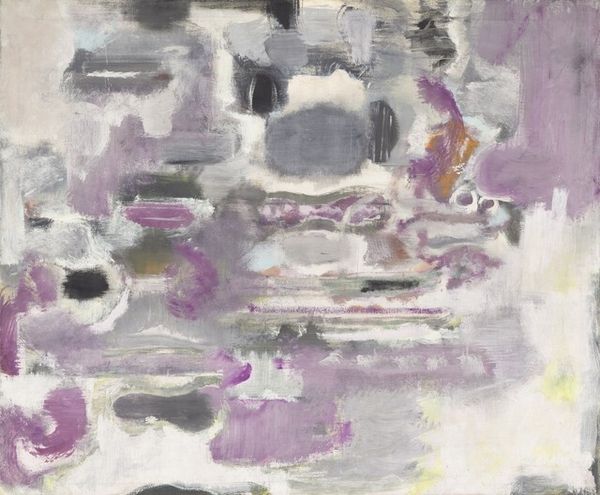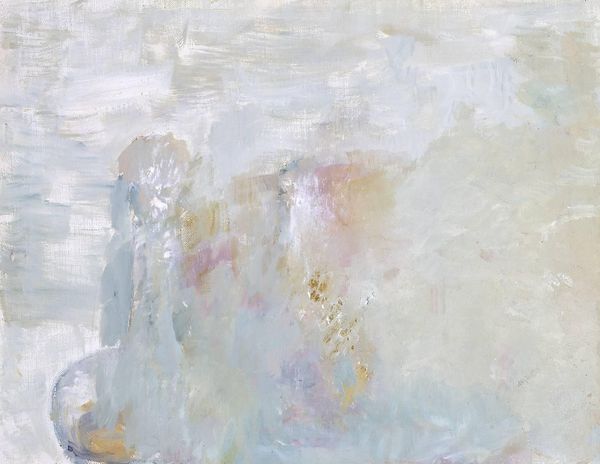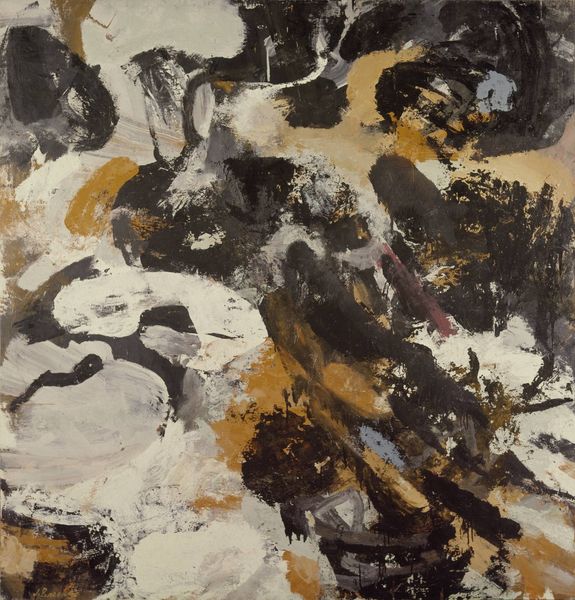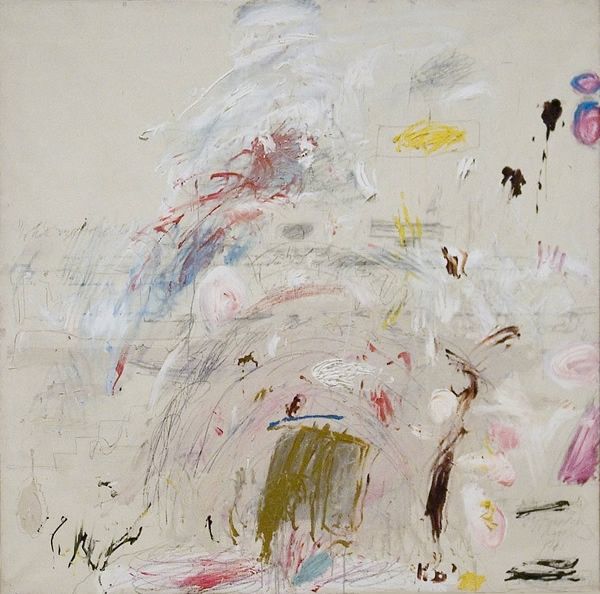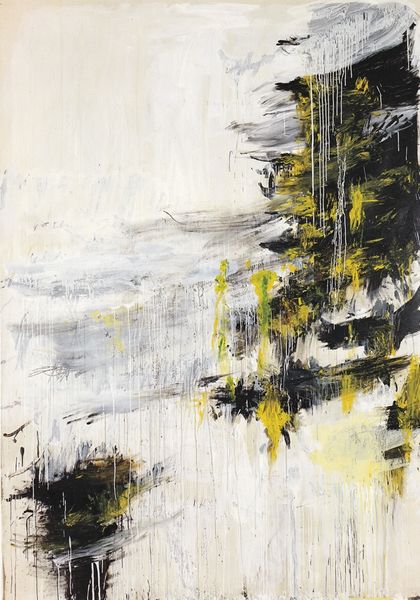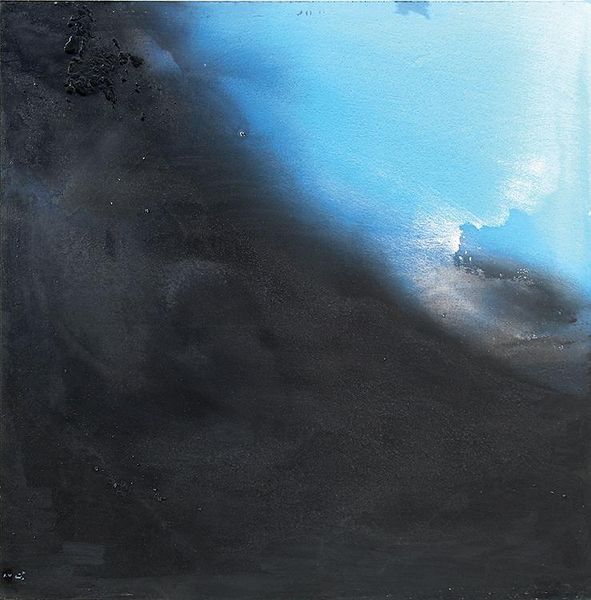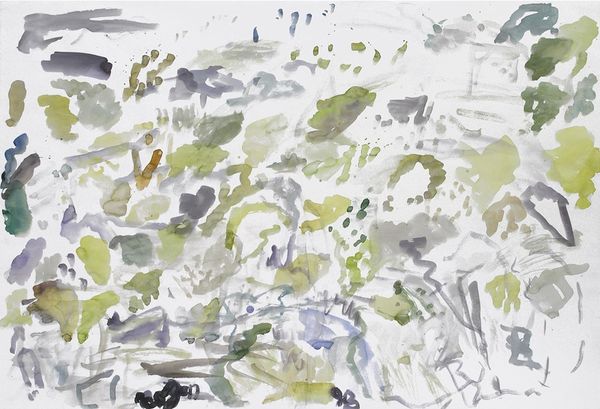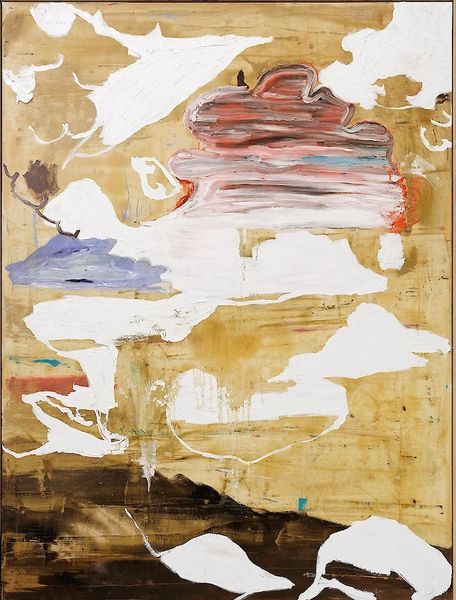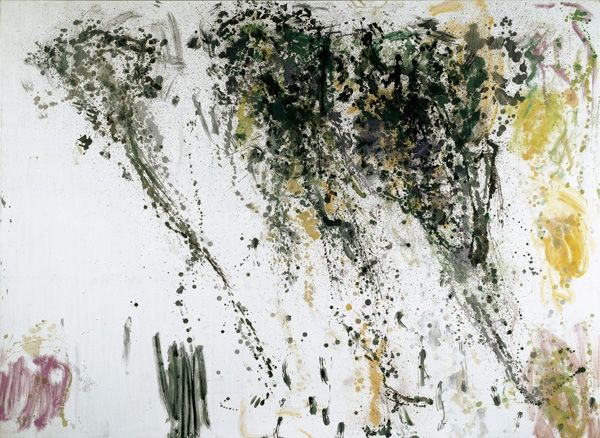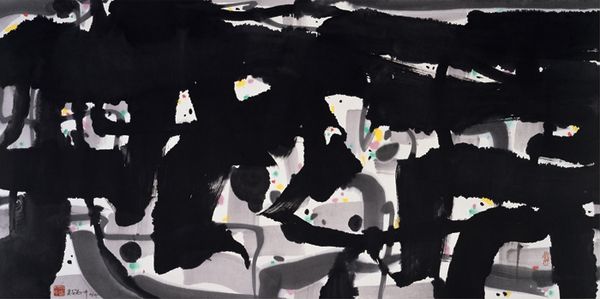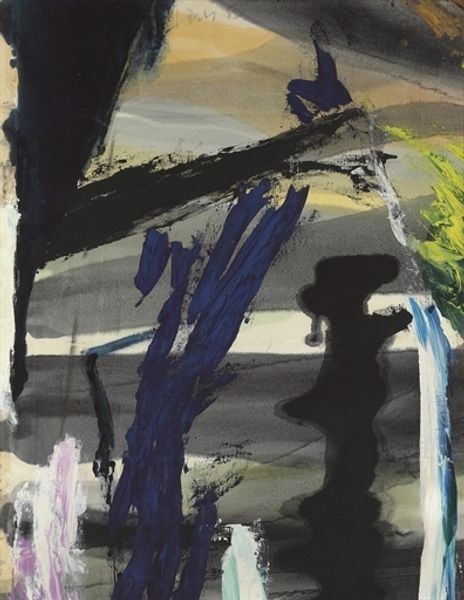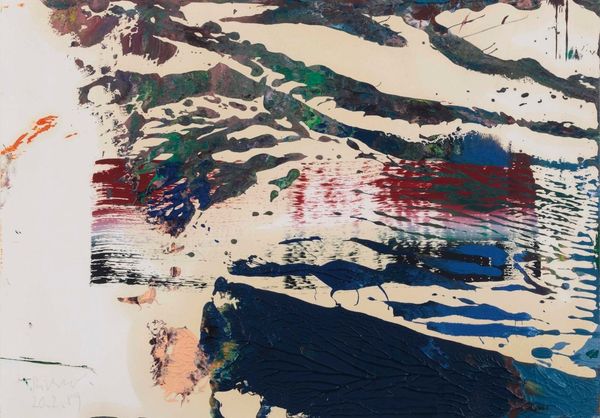
painting, watercolor
#
abstract painting
#
painting
#
asian-art
#
landscape
#
painted
#
watercolor
#
abstraction
#
modernism
#
watercolor
Copyright: Wu Guanzhong,Fair Use
Editor: Wu Guanzhong's "Mountains High and Streams Eternal," created in 1986, presents an abstract landscape in watercolor. It feels very evocative of classical Chinese painting but also strikingly modern. What do you see in this piece? Curator: The strength of this image lies in its tension between the traditional and the avant-garde. The mountainscape is archetypal – instantly legible as such across cultures, carrying the weight of centuries of similar representations. And, these rock forms down below, almost feel like tears, don’t they? Editor: Tears? That's interesting; I was focusing on the gray palette. How does the imagery convey that weight of tradition? Curator: The use of watercolor on paper is in itself a significant gesture, invoking the long history of Chinese landscape painting, or *shanshui*. It signals a connection to a cultural past. But see how Wu subverts expectations! These abstract forms almost deny any fixed point of view. How do you interpret the artist’s intention, do you think, behind these modernist touches? Editor: Maybe to suggest nature’s ever-changing essence, rather than a fixed reality? It's almost as if the landscape is dissolving, transforming. Curator: Precisely. There’s a deep symbolism embedded in landscape painting. Mountains represent the yang, the masculine, while water embodies the yin, the feminine. Wu's work uses this visual language to delve into collective memory. He makes us confront continuity. Editor: So, it's about acknowledging tradition while simultaneously pushing beyond its constraints? I hadn't thought about the gendered associations of the elements before. Curator: Exactly. The painting uses recognizable cultural symbols to build upon an old art form, while the fluid forms of watercolor speak to impermanence. That conversation of holding space for past and future helps to keep the memory alive, right? Editor: Yes, absolutely. Looking at it now, I see how the abstract elements allow for a more personal and reflective interpretation, even as it still nods to a shared cultural understanding.
Comments
No comments
Be the first to comment and join the conversation on the ultimate creative platform.
